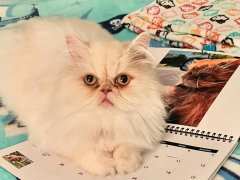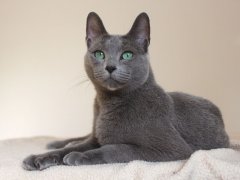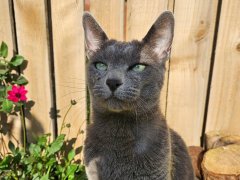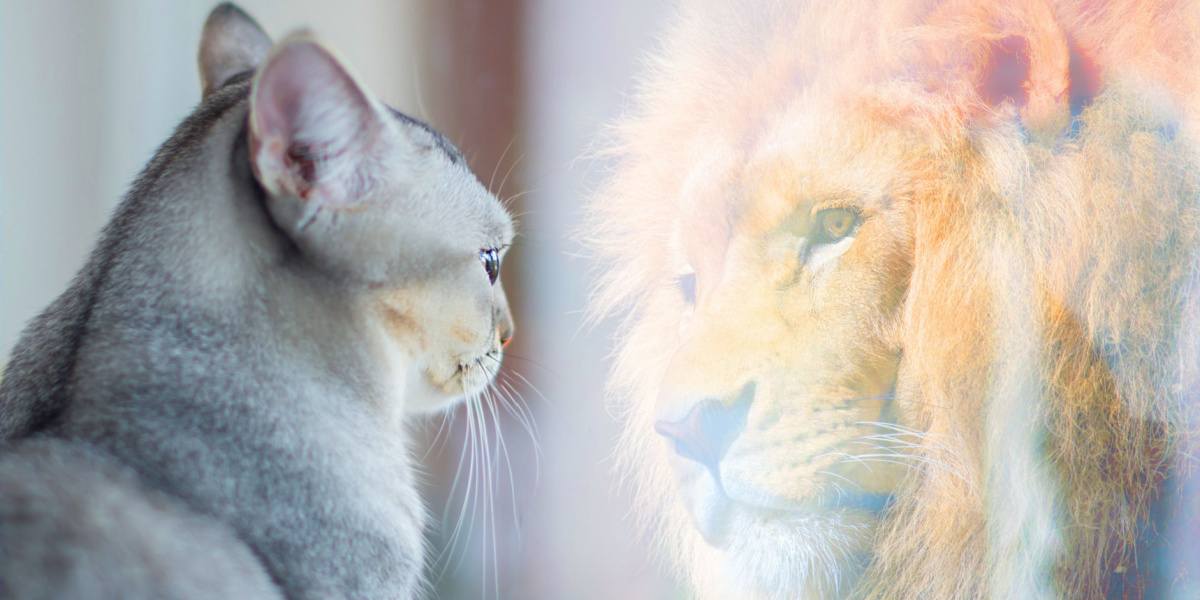
Have you ever compared your pet cat to a lion or a tiger? While we know that the cute cat curled up on your knee is very different from a dangerous lion you might see on safari, there are some surprising similarities between all species of the cat family.
All cats share a common ancestor and domestic cats may have evolved from the African wildcat, which has almost identical DNA. Domestic cats and big cats share many of the same characteristics and have similar morphology, despite their differences in size. Domestic cats are actually only partially domesticated, due to their ability to survive and breed in the wild without human intervention.Key Takeaways
Let’s take a closer look at how domestic cats are related to big cats.
The Evolution of the Domestic Cat
All cat species, big and small, share over 95% of their DNA. They all share a common ancestor dating back to around 25 million years ago when cats first evolved. Around 10 million years ago, the Felidae (cat) family began to evolve further lineages and branched off into three genera:
- Panthera (lions, tigers, leopards, snow leopards, pumas, and jaguars)
- Acinonyx (the cheetah)
- Felis (all other “small” cats including bobcats, lynx – also known as the jungle cat, cougar, and ocelots)
Our domestic cat (Felis catus) is thought to have evolved around 10,000 years ago, which is relatively recent in terms of evolution. The DNA of the African wildcat (Felis sylvestris lybica) is almost identical to that of our pet cats, meaning that it is this species that is the main ancestor of today’s domestic cats.
Humans have shared their lives with cats for thousands of years but despite this, our modern-day pet cats are only considered to be semi-domesticated. This is because, over this time, they have not undergone any significant changes and are still totally capable of surviving in the wild. This is demonstrated by feral cats who live, hunt, and breed very successfully without any human intervention.
A domestication model such as this is very different from other domesticated species. For example, the breeding and selection of dogs have been completely controlled by humans to produce animals with specific traits and characteristics. The majority of pet dogs are hugely different from their wild ancestors whereas pet cats are remarkably similar to wild cats. They retain many of the same instincts, behaviors, and morphology, despite being tamer and living a very different lifestyle.
Scientists believe that the domestication of cats came about as wild cats were initially attracted to grain stores where there would have been a high population of rodents for them to hunt. The tamer cats would have been more likely to live closer to human dwellings, therefore naturally selecting for tameness as they bred with one another.
Similarities Between Domestic Cats and Big Cats
1. They Are Obligate Carnivores
Both domestic cats and big cats need meat in their diet to remain in good health. Without it, they become deficient in certain nutrients which can result in all sorts of health problems.
2. They Have a Similarly Shaped Body
Although they might vary hugely in size, domestic cats and big cats all have strong muscular bodies with long tails that aid balance, and similar shaped skulls and dentition. These features all help to make them well-adapted to hunt prey mammals and birds.
3. They Scent-Mark Their Territories
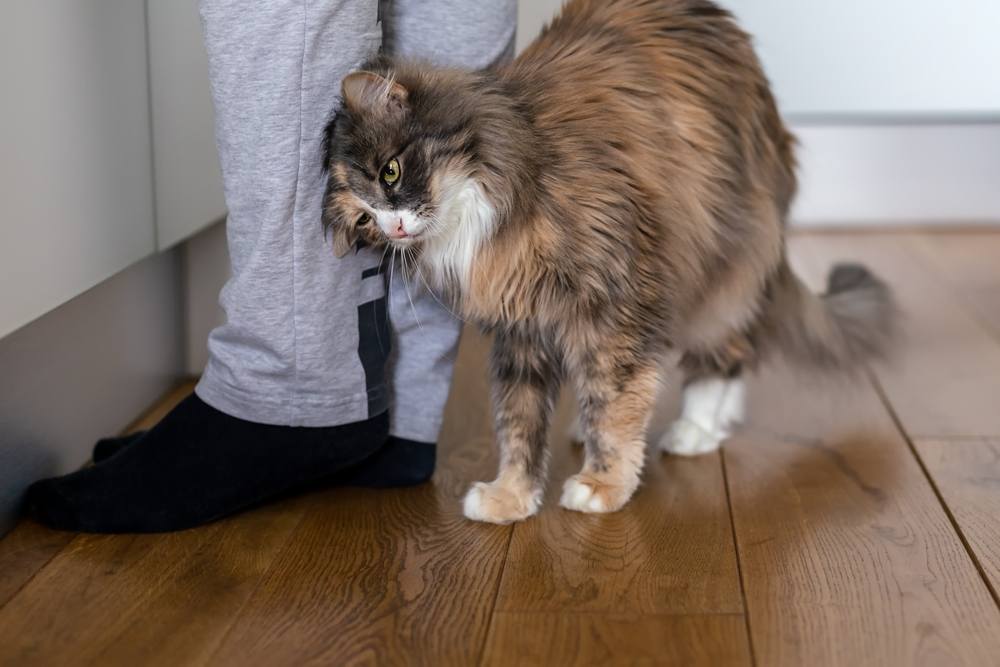
Cats use their own scent to mark territory that is “theirs” and to warn off any strange cats that may wander onto their turf.
Have you noticed your cat rubbing their face on your furniture and the edges of walls in your house? They are marking their territory with their own personal scent when they do this and big cats do exactly the same in the wild, often on tree trunks or rocks.
Both domestic and big cats also spray urine to mark their territory and scratch around certain areas to leave their scent. This scent marking acts as a warning to other cats in the area that this territory is taken.
4. They Are Solitary
Most members of the Felidae family, both large and small, are highly territorial and prefer to live alone, only choosing to interact to mate. Lions are the only felines that form social family groups called a “pride”
5. They Are Excellent Hunters
Both domestic cats and large cats have very strong hunting instincts. Hunting is an essential skill that big cats need to survive. Most domestic cats have the luxury of food provided for them by their owners, but they will often still hunt wildlife such as birds and rodents, even if they do not eat them.
Even indoor cats retain their hunting instincts although this is expressed through play as they stalk, pounce, and chase toys.
6. They Have a Highly Developed Sense of Smell

Domestic cats share a tremendous sense of smell with their big cat ancestors and current day big cats.
All felines have a sense of smell that is far superior to that of a human. Both domestic cats and big cats have a tiny organ on the roof of their mouth called the vomeronasal organ (sometimes called the Jacobson’s organ). This organ allows a cat to detect pheromones (chemical messengers) from other cats and animals.
This is why cats sometimes sniff with open mouths. They also sometimes curl their upper lips in an attempt to pass as many scent particles as possible over the vomeronasal organ. This curling of the lips is called the flehmen response. Both domestic cats and big cats have this ability.
7. They Have Retractable Claws (With One Exception)
The cheetah is the only member of the cat family that cannot retract its claws. In fact, their genus name ‘Acinonyx’ means ‘no move claw’ in Greek.
Fun Similarities Between Big Cats and Domestic Cats
1. They All Like Boxes
You’ve probably noticed that your cat loves an empty box. It turns out that big cats such as tigers and lions enjoy them too. Zoos often provide them with large boxes to help with the enrichment of their enclosures and to prevent boredom.
2. Big Cats Like Catnip Too
Does your cat go wild for a catnip toy? Around 50-70% of domestic cats are sensitive to the effects of catnip but this isn’t limited to our pet cats. A similar proportion of big cats also react to catnip and show similar euphoric-like behavior.
3. They All Like To Knead
It is thought that cats knead as a result of a learned trait during the nursing period whereby kneading their mother’s teats helps to stimulate the let-down of milk. Big cats, both young and old, also knead.
4. They All Sleep a Lot

If you ever go to a zoo and see a large cat, chances are very high that they will be enjoying a nice, long nap.
All cats, regardless of their size, love to sleep. Both domestic cats and big cats will spend on average 16-20 hours per day sleeping. That’s a lot of snoozing!
Differences Between Domestic Cats and Big Cats
1. Their Size
Perhaps the most obvious difference between domestic cats and big cats is their size. The average domestic cat weighs around eight pounds whereas a big cat can weigh over 200 pounds.
2. Their Vocal Abilities
Smaller cats (including wild cats such as lynx and ocelots) purr but cannot roar whereas big cats (such as lions, tigers, and leopards) roar but cannot purr. This is due to differences in their throat anatomy.
The hyoid bones in the larynx (voice box) in a big cat are soft and flexible which allows them to produce a loud roar. In a smaller cat, the hyoid bones are more rigid which allows them to vibrate and produce the purring sound we associate with our pet cats.
The exception to this rule is the cheetah which purrs but cannot roar. They can also produce a high-pitched chirp which is unique among the cat family.
3. The Shape of Their Pupils
Smaller cats, including our domestic cat, have pupils that can narrow to vertical slits. Big cats have round pupils. The difference is believed to come down to the type of environment that these different species live in and their different requirements to be able to absorb light.
Domestic Cats and Big Cats
Domestic cats are indeed related to big cats and as such they share many of the same behavioral traits and characteristics. Despite the huge variation in size, they are also very similar in appearance. Next time you’re watching your pet cat hunt prey or their toys, just imagine them as a lion stalking an antelope on the planes of Africa.
Pet cats have evolved to live quite happily with humans yet they are still capable of surviving on their own which means that they aren’t truly domesticated in the way that some species are. There are lots of ways in which the housecat is very similar to its wild, larger cousins.
Also Read: 7 Similarities Between Domesticated Cats and Big Cats
Frequently Asked Questions
What did the domestic cat evolve from?
Domestic cats are most closely related to the African wildcat (Felis silvestris lybica).
Are pet cats truly domesticated?
Although our pet cats are obviously tamer than wild cats, they retain a lot of their wild cat ancestor’s characteristics and behaviors, including the ability to survive and breed without any human intervention. This means that they are considered to be semi-domesticated as opposed to truly domesticated like other species such as dogs.
Do housecats come from big cats?
All members of the cat family share a common ancestor and so they are related to big cats such as lions and tigers. In fact, our pet cats share over 95% of their DNA with tigers.
